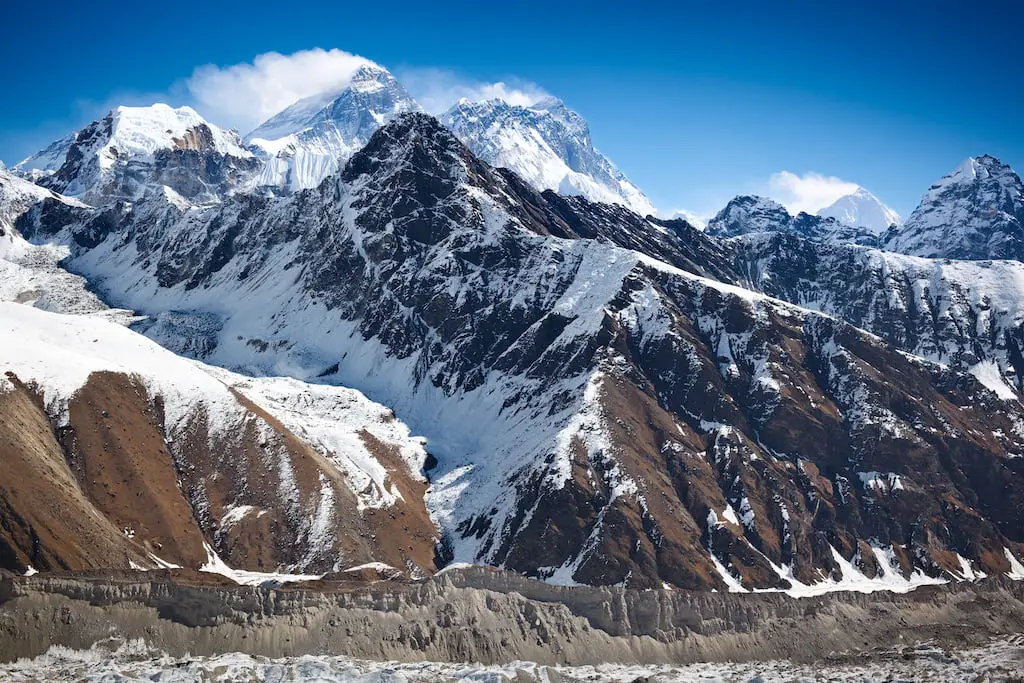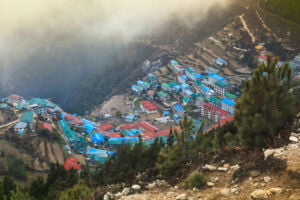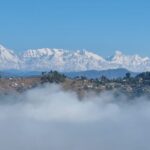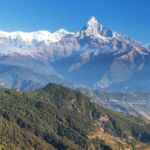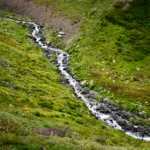Solukhumbu is a really famous tourist destination in Nepal. The main reason for its popularity is the fact that it houses Mt.Everest the tallest peak in the world or the top of the world. Besides that Solukhumbu is also famous for the Sagarmatha National Park and the other Himalayas that it houses. Spread over an area of 3312 sq. km, this district is home to 104,768 people as per the 2021 census. This region has a population density of 31 people per sq. km which is pretty less and 50.2% of the total population are men while the rest are women
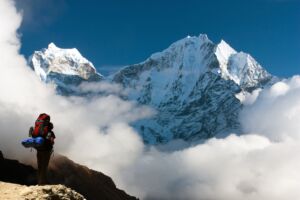
Solukhumbu encases a couple of hiking trails that are just gorgeous and aesthetically pleasing. One of those trails is the Pikey Cultural trail which is a part of the lower Solukhumbu. The trail is named after Pikey hill which is 4056m tall and one of the highest hills in the whole of Solu (one of the two subregions of Solukhumbu). Most of the central and eastern Himalayan peaks, including Everest, Kanchenjunga, Makalu, Annapurna, Lhotse, Gauri Shanker, Numbur, Karyalung, Khatang, Mera Peak, Shishapangma, Thamserku, Nuptse, and Lhotse, can be seen from Pikey. During good weather, the height also provides spectacular dawn and sunset sights. The trail travels through several of the region’s most attractive villages. The Pikey Danda area is reached via a path that runs via Jiri-Chaulakharka-Nagaur.
The pathway begins in Phaplu and continues to Salleri through Kerung, Pattale, Jhapre, Pikey Peak, Lamajura, Junbesi, and Kerung. The name Pikey is derived from a Sherpa clan divinity. The villagers celebrate their kin deity, the eastern Chyabo Pikey, as Pikey Hlapchen Karbu, during the month of July. Mountain biking, paragliding, birdwatching, meditation, and pilgrimage are some of the other exciting business tourist activities available at Pikey. From here, the trail goes down through the thick jungle until it reaches Beni, where it meets the Mt. Everest trek.
The month of July is an excellent time to visit Pikey because it is when the locals celebrate the kin deity, the eastern Chyabo Pikey. One can also continue on to the Dudhkunda path from Pikey. Other Pikey Cultural Trail entries include Rumjatar and Jiri. As previously indicated, once in Pikey, one has the option of traveling the Dudhkunda Cultural Trail through Taksindu. Phaplu, Junbesi, Taksindu, Dudhkunda, Beni, Salleri, and Taksindu are all on the trail. This hike passes through beautiful towns and scenery. Junbesi, one of the most beautiful Sherpa villages, is located halfway between Pikey and Dudhkunda. On the way, one might stop by the renowned Thuptenchholing monastery.
Moreover, Dudhkunda Cultural Trail is another hiking trail in the lower Solukhumbu region. Standing 4560m tall, Dudhkunda is a sacred mountain lake that sits on the lap of Mt. Number. The journey to Dudhkunda, which begins in Phaplu and goes around the Dudhkunda Lake, is frequently paired with an ethnic experience, traveling through Khaling Rai communities and then returning to Salleri via dense bush and animals. The trial as a whole delivers a detailed interaction with the area’s peculiar Khaling Rais. Dudhkunda, which literally means “milk lake,” is considered a sacred lake and is venerated by the locals. It is said that bathing in its sacred waters might grant one’s wishes. Pilgrims and Shaman priests (Jhankris) hold a festival here on the full moon evenings in August.
Another major stop of most tourists is the famous Namche Bazar which is the transit center for excursions to Mt. Everest and other peaks in the area. It seems to be a thriving town, with anything from climbing equipment for sale to trekking and Tibetan antiquities. The visitor courtyard at Park headquarters has detailed information on many climbs in the area, as well as mementos from various climbing expeditions and information on the Sherpa people’s lifestyle and culture.
